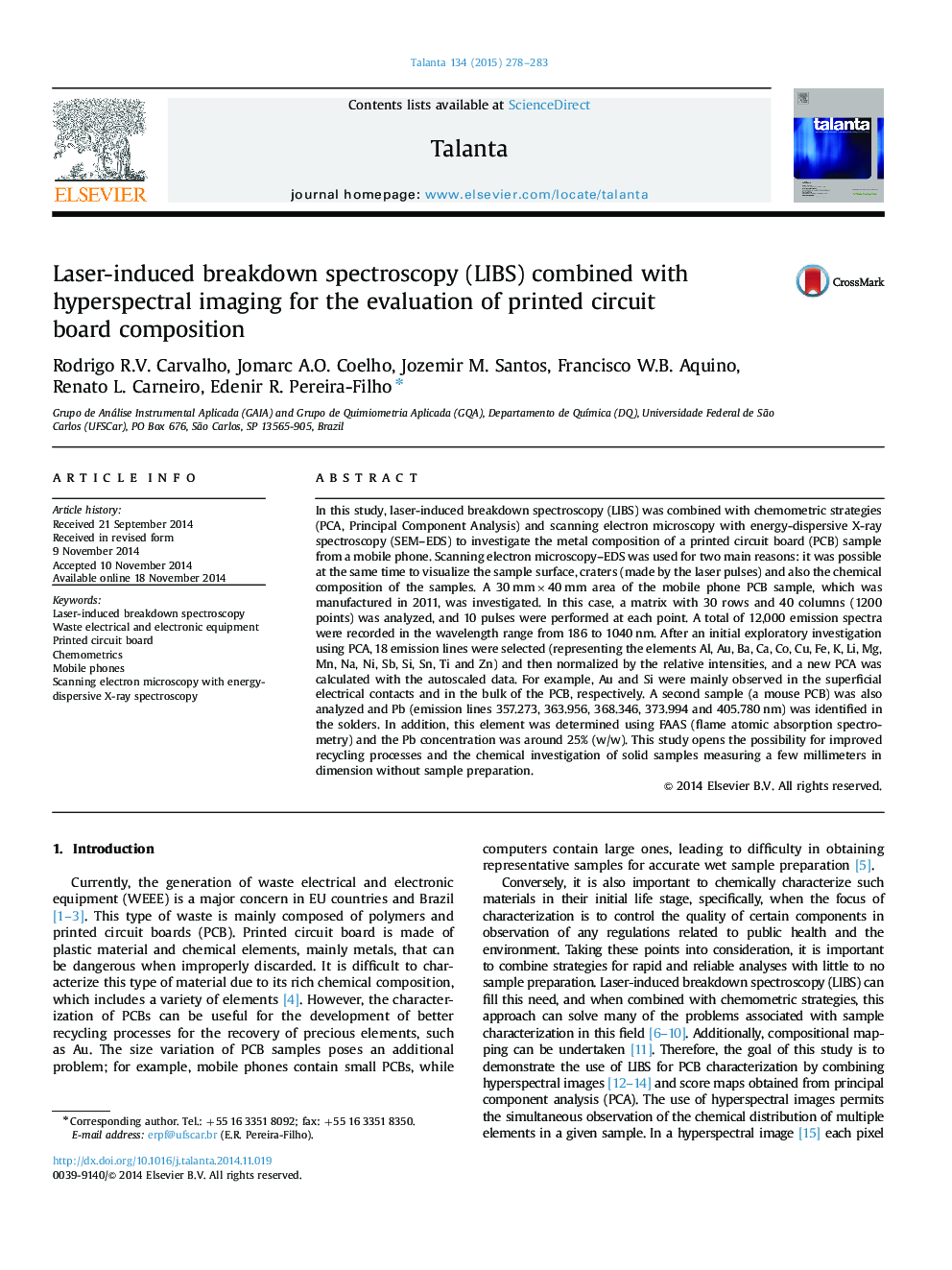| Article ID | Journal | Published Year | Pages | File Type |
|---|---|---|---|---|
| 1244079 | Talanta | 2015 | 6 Pages |
•LIBS/Chemometrics identified elements in waste electrical and electronic equipment.•Spectral data treatment proposed to obtain more information from the signals.•Score maps from Principal Component Analysis provided the location of elements.•LIBS and Chemometrics offer a method of analysis of materials for recycling.
In this study, laser-induced breakdown spectroscopy (LIBS) was combined with chemometric strategies (PCA, Principal Component Analysis) and scanning electron microscopy with energy-dispersive X-ray spectroscopy (SEM–EDS) to investigate the metal composition of a printed circuit board (PCB) sample from a mobile phone. Scanning electron microscopy–EDS was used for two main reasons: it was possible at the same time to visualize the sample surface, craters (made by the laser pulses) and also the chemical composition of the samples. A 30 mm×40 mm area of the mobile phone PCB sample, which was manufactured in 2011, was investigated. In this case, a matrix with 30 rows and 40 columns (1200 points) was analyzed, and 10 pulses were performed at each point. A total of 12,000 emission spectra were recorded in the wavelength range from 186 to 1040 nm. After an initial exploratory investigation using PCA, 18 emission lines were selected (representing the elements Al, Au, Ba, Ca, Co, Cu, Fe, K, Li, Mg, Mn, Na, Ni, Sb, Si, Sn, Ti and Zn) and then normalized by the relative intensities, and a new PCA was calculated with the autoscaled data. For example, Au and Si were mainly observed in the superficial electrical contacts and in the bulk of the PCB, respectively. A second sample (a mouse PCB) was also analyzed and Pb (emission lines 357.273, 363.956, 368.346, 373.994 and 405.780 nm) was identified in the solders. In addition, this element was determined using FAAS (flame atomic absorption spectrometry) and the Pb concentration was around 25% (w/w). This study opens the possibility for improved recycling processes and the chemical investigation of solid samples measuring a few millimeters in dimension without sample preparation.
Graphical abstractFigure optionsDownload full-size imageDownload as PowerPoint slide
